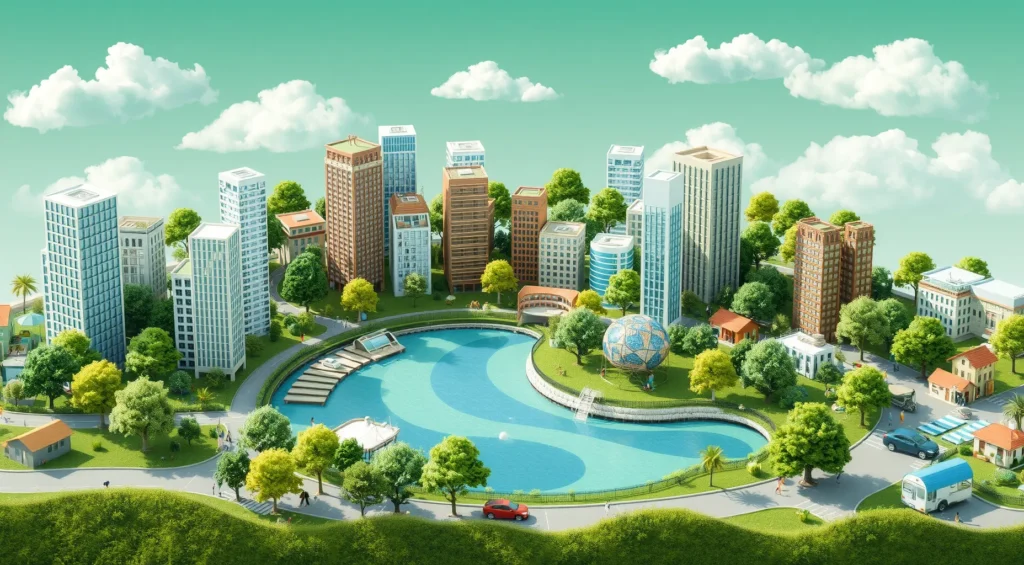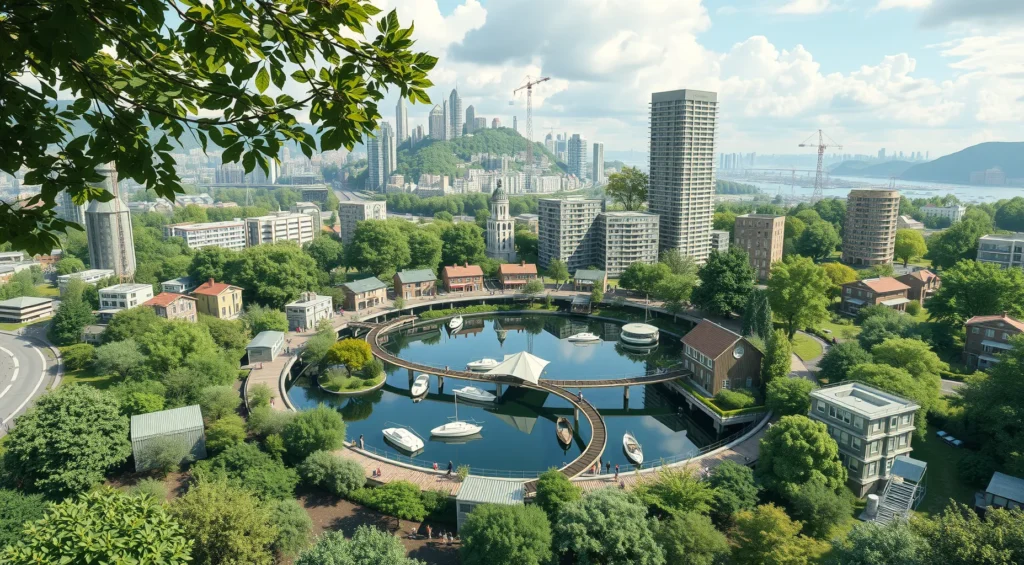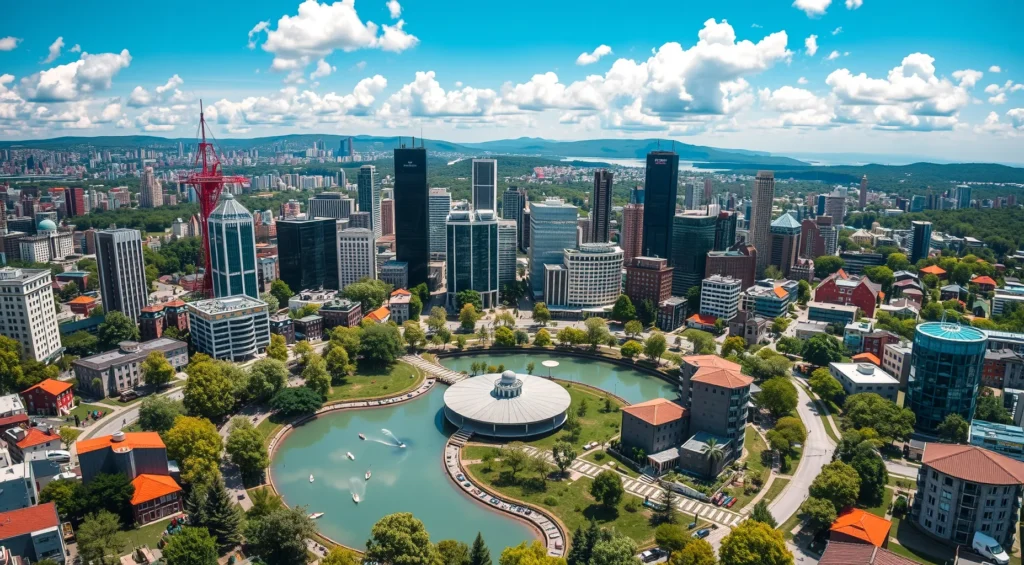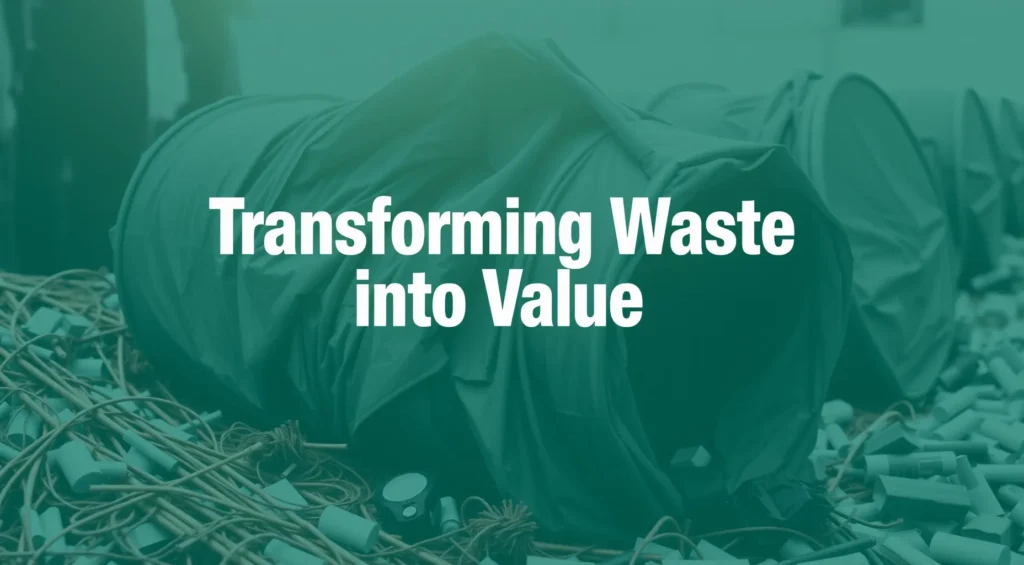
How AI Supercharges the Circular Economy
Understanding the Circular Economy
The circular economy aims to replace the traditional “take-make-dispose” system with a closed-loop model. Instead of waste ending up in landfills, materials are continuously reused, recycled, or repurposed.
AI brings precision and efficiency to this vision. From predictive maintenance to better waste categorization, AI has the potential to reshape how we manage resources.
Key benefits of AI in circular systems:
- Reducing waste through accurate forecasting.
- Optimizing resource usage at every stage.
- Automating labor-intensive recycling processes.
By connecting data and creating actionable insights, AI aligns perfectly with the circular economy’s goals.
Predictive Analytics for Smarter Resource Management
AI-powered predictive analytics helps companies anticipate demand and usage patterns. Imagine a company knowing exactly how many materials they’ll need months ahead.
With these tools, businesses can:
- Reduce overproduction by planning inventory more effectively.
- Extend product lifespans through maintenance alerts.
- Prevent material shortages or surpluses.
For instance, AI tools in agriculture predict crop yields, minimizing surplus food waste. In manufacturing, predictive models optimize production schedules.
AI in Material Recovery and Recycling
Traditional recycling is labor-intensive and error-prone. AI streamlines these processes using cutting-edge technology like:
- Robotic sorting machines trained to identify materials.
- Computer vision systems that detect contaminants in recycling streams.
- AI-powered marketplaces to match supply and demand for reclaimed materials.
Examples include smart sorting robots that differentiate plastics, metals, and paper with 99% accuracy, drastically improving recycling rates.
Precision Farming for Food Waste Reduction
Agriculture generates significant waste, but AI is making strides in precision farming. These systems combine satellite data and IoT sensors to monitor crop health and soil conditions.
Benefits include:
- Reducing water and fertilizer waste.
- Predicting yield sizes for better market alignment.
- Preventing spoilage with optimized harvest timings.
One study found that farms adopting AI saw waste reduction of up to 30%. With AI-driven efficiency, the entire food supply chain can become more sustainable.
Enabling Circular Business Models with AI
AI unlocks entirely new business models aligned with circular principles, like product-as-a-service or shared economies. Companies are increasingly adopting approaches where ownership gives way to long-term leasing.
- AI ensures assets like cars or machinery are utilized fully through predictive maintenance and usage tracking.
- Platforms like Uber or Lime maximize resource-sharing efficiency.
By creating more durable, reusable products, businesses save money and reduce their carbon footprints.
AI’s Role in Revolutionizing Waste Management
Smarter Waste Sorting Technologies
The days of manual sorting are numbered. AI-driven waste sorting systems are drastically improving the efficiency of recycling facilities.
AI-powered robots equipped with machine learning algorithms can:
- Detect and categorize materials like glass, plastic, or metal.
- Separate waste at unprecedented speeds, reducing contamination.
- Identify non-recyclable items to streamline processing.
Companies like ZenRobotics are leading the charge, deploying robots capable of sorting up to 4,000 items per hour.
Optimizing Waste Collection Routes
AI isn’t just sorting waste—it’s optimizing how we collect it. Smart waste bins equipped with sensors communicate fullness levels to collection services, ensuring pickups are efficient.
Benefits of AI-based route optimization:
- Reduced fuel consumption for garbage trucks.
- Lower operational costs for municipalities.
- A smaller environmental footprint due to fewer trips.
In some cities, these systems have slashed garbage truck mileage by 20%.
Repurposing Industrial Byproducts
Industries generate tons of byproducts that often go to waste. AI is helping to identify opportunities to repurpose these materials for new uses.
For example:
- AI-driven simulations predict how waste like slag or fly ash can be incorporated into construction materials.
- Byproducts from one industry are matched with needs in another, such as food waste being turned into bioenergy.
This industrial symbiosis creates circular value chains, reducing the reliance on raw resources.
AI-Driven Circular Design Processes
Designing for the circular economy starts at the product development stage. AI tools help designers create items that are easier to recycle or repair.
How it works:
- AI evaluates the recyclability of materials in proposed designs.
- Algorithms recommend substitutes for more sustainable alternatives.
- Predictive models assess a product’s lifecycle to minimize waste.
Startups like Circulor use AI to track the sustainability of raw materials, ensuring they align with circular principles.
Blockchain and AI: A Circular Power Couple
Blockchain technology combined with AI ensures transparency across circular supply chains. Every step of a product’s journey, from raw material sourcing to end-of-life recycling, is documented securely.
With blockchain, companies can:
- Prove their sustainability claims to customers.
- Identify inefficiencies or bottlenecks in their supply chains.
- Incentivize consumers to return items for recycling by offering traceable rewards.
Brands like Everledger are using blockchain and AI to track recycled diamonds and metals, promoting ethical practices.

Scaling Circular Economy Solutions with AI
AI-Enhanced Reverse Logistics
The circular economy thrives on reverse logistics, where used products flow back to manufacturers for repair, refurbishment, or recycling. AI optimizes these processes to make them more efficient and cost-effective.
Key AI applications in reverse logistics:
- Predicting the volume of returns to prevent bottlenecks.
- Automating inspections to assess the condition of returned products.
- Recommending repair or recycling options based on condition.
For instance, AI-driven software helps companies like Dell efficiently collect and refurbish old electronics, keeping valuable materials in use.
Advanced Material Innovation with AI
AI accelerates the discovery of sustainable materials that fit circular principles. Machine learning models analyze chemical compositions to identify substitutes for unsustainable materials.
Benefits include:
- Creating fully biodegradable alternatives to plastics.
- Developing materials that are easier to separate during recycling.
- Enhancing durability for longer product lifespans.
AI tools have already led to breakthroughs like self-healing concrete and recyclable composites for construction.

Predictive Maintenance and Longevity Solutions
AI-powered predictive maintenance extends the life of machines and products by identifying issues before they cause failures. This approach keeps items in use longer, reducing waste.
How it works:
- Sensors monitor equipment in real-time, transmitting performance data.
- AI analyzes this data to predict wear and tear.
- Alerts are sent to schedule maintenance or order parts proactively.
From wind turbines to washing machines, predictive maintenance reduces downtime and boosts efficiency.
Closing the Loop in E-Waste with AI
Electronic waste (e-waste) is one of the fastest-growing waste streams globally. AI is key to tackling this challenge by improving recycling rates and material recovery.
Applications include:
- AI systems identifying valuable materials like gold or rare earth metals in discarded electronics.
- Automating disassembly processes to separate components efficiently.
- Using AI to match refurbished electronics with potential buyers.
Organizations like Refind Technologies use AI to detect and sort e-waste, recovering up to 90% of valuable materials.
Creating Circular Marketplaces with AI
AI helps foster circular marketplaces, where businesses and consumers trade used items or surplus materials. These platforms rely on AI to ensure smooth operations and match supply with demand.
Features of AI-driven marketplaces:
- Intelligent pricing algorithms to determine fair market values.
- Recommendation systems to connect buyers with relevant products.
- Fraud detection to ensure transactions remain secure.
Platforms like OLIO and Too Good To Go use AI to reduce food waste by redistributing surplus goods before they spoil.
AI’s Pivotal Role in a Waste-Free Future
AI isn’t just a tool—it’s a catalyst for achieving the circular economy’s goals. From revolutionizing recycling to designing waste-free systems, it empowers businesses and individuals to reimagine how we use resources.
By combining technological innovation with a commitment to sustainability, we can transform waste into value and build a more regenerative economy.
Ready to embrace the change? The circular economy, powered by AI, offers endless possibilities for a cleaner, greener future.

The Future of AI and the Circular Economy
AI-Driven Policy and Decision-Making
Governments and organizations are increasingly using AI to shape policies that align with circular economy principles. Advanced analytics provide the data needed to craft more effective regulations.
AI supports decision-making by:
- Simulating the long-term impacts of policies on waste and resource use.
- Identifying inefficiencies in current systems.
- Recommending incentives to encourage businesses and consumers to adopt sustainable practices.
For instance, AI models have been used in Europe to guide plastic reduction targets and improve waste collection systems.
Real-Time Monitoring of Circular Systems
IoT sensors paired with AI create a dynamic feedback loop, offering real-time insights into material flows and resource usage. This level of monitoring enables adaptive management.
Applications include:
- Tracking the lifecycle of products to ensure full material recovery.
- Identifying inefficiencies or leaks in circular supply chains.
- Adjusting processes dynamically based on environmental conditions.
AI-powered dashboards are already helping companies like Unilever track their packaging waste in real time, ensuring compliance with sustainability goals.
Driving Consumer Awareness with AI
Consumer behavior plays a vital role in the circular economy. AI helps educate and engage individuals through personalized content and interactive tools.
How AI empowers consumers:
- Apps using AI suggest sustainable choices, like opting for repair services over replacements.
- AI chatbots provide quick answers about recycling and waste reduction.
- Platforms use machine learning to tailor sustainability tips to user habits.
Apps like JouleBug gamify sustainable living, encouraging users to track and share eco-friendly actions.
Circular Innovation Hubs Powered by AI
As the circular economy expands, AI-enabled innovation hubs will become the breeding ground for sustainable technologies. These hubs leverage AI to test, validate, and scale new solutions.
Features of these hubs include:
- AI tools for rapid prototyping of circular products.
- Data-driven insights into market trends and sustainability needs.
- Collaborative platforms connecting innovators with resources and funding.
Cities like Amsterdam are already piloting such hubs, integrating AI to drive the next generation of circular innovations.
Challenges and the Road Ahead
Despite its potential, the integration of AI into the circular economy faces hurdles:
- Data availability: Reliable and standardized data is critical for AI to work effectively.
- Economic barriers: Small businesses may struggle to adopt AI tools due to costs.
- Ethical concerns: AI must be transparent and used responsibly to avoid misuse.
However, with continued investment and collaboration, these challenges can be overcome, paving the way for a smarter, more sustainable future.
The Circular Revolution Is Here
The synergy between AI and the circular economy is transforming waste into value, one innovation at a time. From smarter resource management to empowering consumers, AI drives scalable, impactful solutions.
As technology evolves, so does our ability to rethink waste and embrace a regenerative future. Together, we can close the loop and create a world where nothing goes to waste. Let’s make it happen!
Resources
European Commission – Digital Strategies for the Circular Economy
EU policies and strategies for integrating AI into circular economy practices.
Read more
Stanford University – AI Sustainability Initiative
Research and insights from Stanford on the intersection of AI and sustainability.
Read more